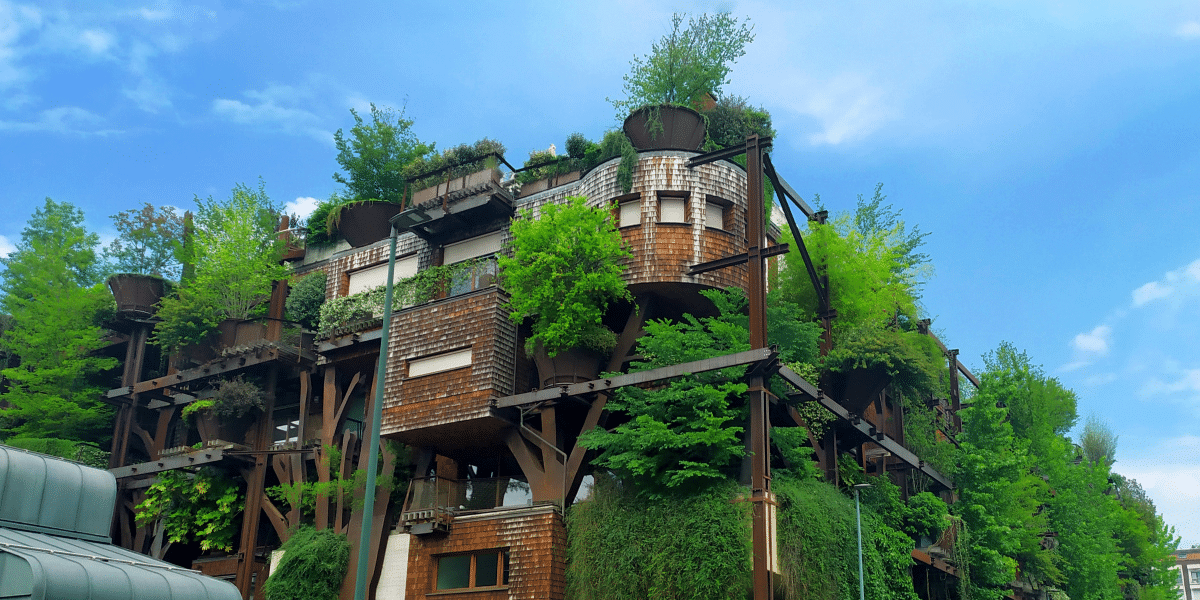Eco-friendly, green, or sustainable architecture focuses on creating buildings and structures that minimize environmental impact. This architectural approach integrates sustainable materials, energy-efficient systems, and designs that reduce resource consumption, resulting in functional and environmentally conscious buildings. In recent years, eco-friendly architecture has transformed from a niche practice into a global movement as the urgency to address climate change and conserve resources has increased.
The primary goals of eco-friendly architecture are reducing waste, conserving water, lowering energy consumption, and creating spaces that harmonize with the environment. From residential homes to office skyscrapers, eco-friendly buildings are vital to our journey toward a more sustainable future.
The Benefits of Eco-Friendly Architecture
Eco-friendly architecture offers a wide range of benefits for the environment and building occupants. One of the most significant benefits is reduced energy consumption, as these buildings are designed to be highly energy-efficient. Features like solar panels, natural ventilation, and efficient insulation allow green buildings to use less energy, lowering utility costs and reducing greenhouse gas emissions.
Additionally, eco-friendly buildings provide better air quality and healthier environments for occupants by using non-toxic building materials and natural lighting. These spaces are designed with the well-being of residents and workers in mind, promoting comfort and productivity. Eco-friendly architecture also supports local ecosystems, with green roofs, rain gardens, and native plants that encourage biodiversity and contribute to the local environment.
Key Elements of Sustainable Building Design
Eco-friendly architecture incorporates several design elements that contribute to its sustainability. One of the most critical aspects is the choice of materials. Sustainable buildings use renewable, recycled, or low-energy consumption materials, such as bamboo, reclaimed wood, and recycled steel. By using materials with low environmental impact, eco-friendly architecture reduces waste and conserves resources.
Water conservation is also essential in eco-friendly architecture. Low-flow fixtures, rainwater harvesting systems, and greywater recycling are common in sustainable buildings, reducing water consumption and supporting responsible water management. By incorporating these elements, green buildings create a balanced relationship with the environment.
The Role of Green Roofs and Vertical Gardens
One of the most visually striking features of eco-friendly buildings is the use of green roofs and vertical gardens. A green roof is covered with vegetation, which helps insulate the building, absorb rainwater, and reduce heat absorption. Green roofs can lower temperatures in urban areas, mitigate the urban heat island effect, and improve local air quality. They also provide habitats for birds, insects, and other wildlife, supporting biodiversity in urban settings.
How Smart Technology Enhances Eco-Friendly Architecture
Smart technology plays a significant role in making eco-friendly architecture even more efficient and adaptable. Many sustainable buildings are equipped with smart thermostats, energy monitoring systems, and automated lighting, which help optimize energy use based on real-time data. For instance, smart thermostats can learn occupants’ preferences and adjust heating and cooling systems accordingly, reducing energy waste.
Eco-Friendly Architecture Around the World
Eco-friendly architecture is gaining popularity worldwide, with innovative green buildings in major cities worldwide. In Singapore, the Jewel Changi Airport features an indoor forest and the world’s tallest indoor waterfall, demonstrating how architecture can blend with nature on a grand scale. The building is designed to be energy-efficient and water-saving, with green spaces that create a unique, relaxing atmosphere for travelers.
In New York City, the Bank of America Tower is one of the world’s most sustainable skyscrapers. It uses a combination of energy-efficient glass, rainwater harvesting systems, and a green roof to minimize its environmental impact. The building even generates electricity using an on-site cogeneration plant, making it nearly self-sufficient in energy.
Challenges of Eco-Friendly Architecture
While eco-friendly architecture offers significant benefits, it also presents particular challenges. One of the main obstacles is the higher initial cost of sustainable materials and technologies. Eco-friendly buildings can be more expensive due to the need for specialized materials, design expertise, and energy-efficient systems. However, many advocates argue that the long-term savings on energy and maintenance costs often offset the initial investment.
The Future of Eco-Friendly Architecture
As awareness of climate change and environmental conservation continues to grow, the demand for eco-friendly architecture is likely to increase. Architects and designers constantly innovate, developing new materials and building techniques that reduce environmental impact. Future advancements may include carbon-neutral buildings, where structures produce as much energy as they consume, and even carbon-negative buildings that actively absorb more carbon than they release.
Embracing a Greener Future Through Architecture
Eco-friendly architecture represents an exciting shift toward more responsible, sustainable building practices that benefit both people and the planet. This movement demonstrates how creativity and technology can come together to address some of today’s most pressing environmental challenges, from energy-efficient homes to green skyscrapers. As more people embrace the principles of sustainable design, eco-friendly architecture is poised to play a crucial role in building a greener, more resilient future.
Published by: Martin De Juan








